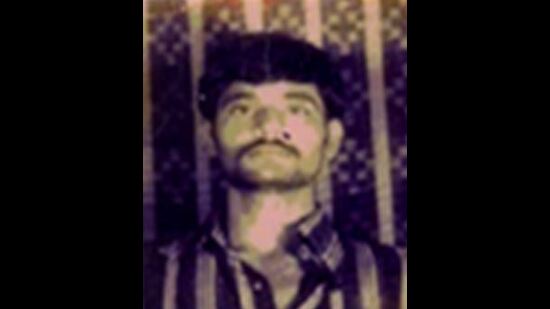
Top CPI (Maoist) leader Nambala Keshavrao alias Basavaraju is likely among the 27 Maoists who have been killed in an encounter with security forces in Chhattisgarh’s Narayanpur district, according to sources. The encounter has been continuing since around 50 hours along the Narayanpur-Bijapur border.
The encounter began after District Reserve Guard’s jawans from four districts of Narayanpur, Dantewada, Bijapur and Kondagaon were out on an operation in the Abujhmad area, following intelligence inputs on the presence of senior cadres of the Maad division of Maoists.
Basavaraju was formerly the head of the Central Military Commission and later became the General Secretary, the highest position in the Maoist hierarchy. He was wanted by the National Investigation Agency (NIA) and police forces in Telangana and Andhra Pradesh and a bounty of Rs 1.5 crore had been placed on him. Officials say his death is a major blow to insurgency in the region, potentially disrupting Maoist leadership and regrouping efforts.
Madhu, Dandakaranya Special Zonal Committee leader, was also killed, per sources.
The success of the operation has been confirmed by Chhattisgarh Deputy CM Arun Sao. He said that the state is committed to become Maoist-free by March 2026. “I congratulate Union Home Minister Amit Shah and (Chhattisgarh home minister) Vijay Sharma and all our forces that they are conducting operations in temperatures of 40 to 42 degrees Celsius. The people of Bastar wants peace and development,” he added.
Notably, the encounter comes a month after security forces undertook the ‘Operation Black Forest’ to combat Maoist presence near Karreguttalu Hill (KGH) along the Chhattisgarh-Telangana border.
About ‘Operation Black Forest’
Operation Black Forest was a major anti-Naxal offensive conducted by Indian security forces in the Karreguttalu Hills, located on the Chhattisgarh-Telangana border. Lasting 21 days, the operation resulted in the elimination of 31 Naxalites, including high-ranking Maoist leaders. It was India’s biggest-ever operation against Naxal insurgents, led by CRPF, Special Task Force (STF), and District Reserve Guard (DRG).
The Karreguttalu Hills had served as a stronghold for Maoist groups like PLGA Battalion 1, DKSZC, TSC, and CRC, acting as a training and weapons development center. Security forces destroyed 214 Naxal hideouts, seized 450 IEDs, 818 BGL shells, 899 bundles of Codex explosives, and recovered 12,000 kg of food supplies. Remarkably, despite the challenging terrain and adverse weather conditions, the operation was completed without any casualties among security personnel. Union
Home Minister Amit Shah declared that India would be Naxal-free by March 31, 2026, marking this operation as a decisive step toward that goal. The operation has significantly weakened the Maoist insurgency, disrupting their command structure and forcing remaining cadres to scatter. With the Indian tricolor now flying over the former Maoist stronghold, this mission is considered a historic victory for security forces.
What are Naxals?
Naxals, also known as Naxalites, are members of a far-left extremist movement in India that originated in Naxalbari, West Bengal, in 1967. They follow Maoist ideology and advocate armed rebellion against the state, primarily fighting for land rights and social justice for marginalized communities, especially tribal populations.
Recent Case: Chhattisgarh Encounter
A major anti-Naxal operation took place in Narayanpur, Chhattisgarh, where security forces eliminated over 34 Naxals, including top commander Basava Raju, who had a ₹1 crore bounty on his head. The encounter occurred in the dense forests between Abhujmad and Indravati National Park, a known Maoist stronghold.
Who was Basava Raju?
Basava Raju, aged around 70, had been one of India’s most wanted Maoist leaders, carrying a reward of ₹1.5 crore on his head. A native of Jiyannapeta village in Andhra Pradesh’s Srikakulam district, he held a BTech degree from the Regional Engineering College (REC) in Warangal.
He had joined the Maoist movement in the 1970s and was known for operating under multiple aliases, including Ganganna, Krishna, Narasimha, and Prakash.
He became general secretary of the CPI (Maoist) in 2018, succeeding Ganapathy, also known as Muppala Lakshman Rao, who was the party’s first general secretary after the merger of the People’s War Group and Maoist Communist Centre (MCC) in 2004.
Mastermind behind Moist Attacks
The Maoist leader played a key role in the 2010 massacre of 76 CRPF jawans in Chintalnar, Chhattisgarh, and the 2013 ambush at Jhiram Ghati, where several Congress leaders were killed in a brutal assault.
He also did not have any recent photograph on record, making him extremely difficult to track. His areas of operation mainly included Chhattisgarh, Telangana, and parts of Maharashtra.
Basavaraju was instrumental in the formation of the CPI-ML (People’s War) in 1980 and rose through the ranks to become part of its central committee in 1992.
After the 2004 merger that formed the CPI (Maoist), he was appointed secretary of the central military commission, where he oversaw armed operations and strategy.
His death is being seen as a major setback for the Maoist movement, which has suffered significant losses in recent years.
Current Situation at Chhattisgarh-Telangana Border
The Chhattisgarh-Telangana border has seen intense anti-Naxal operations in recent weeks. Security forces have eliminated 31 Naxals in the Karreguttalu Hills, a former Maoist stronghold. Additionally, 22 Naxals were killed in Bijapur, and 33 surrendered in Sukma, signaling a major decline in insurgent activity. Authorities have also arrested 20 Maoists and seized a large cache of weapons, including INSAS rifles, grenades, and explosives. The government remains committed to eliminating Naxalism by March 31, 2026.
Impact of Basava Raju’s Assassination
The death of Basava Raju, the Supreme Commander of CPI (Maoist), is a major blow to the Maoist movement. His elimination has created a leadership vacuum, potentially leading to internal disarray and reduced morale among insurgents. Raju was the principal strategist behind several deadly attacks, including the 2010 Dantewada ambush, which killed 76 CRPF personnel. His absence may weaken Maoist operations, making it harder for them to regroup and recruit new members. Some experts believe the Maoist movement could collapse entirely, as there is no clear successor capable of uniting the cadre.
